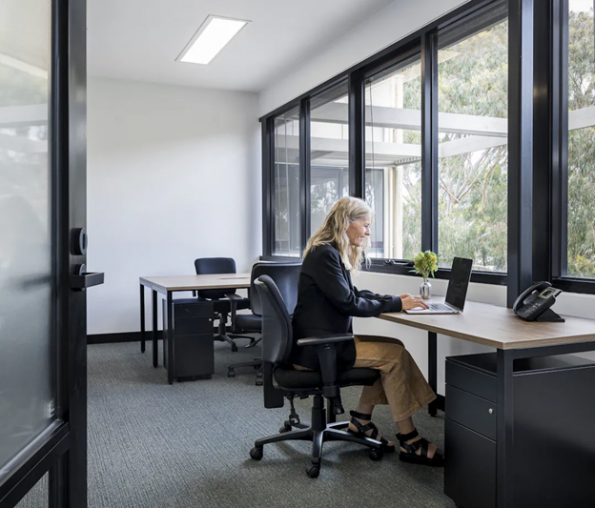Navigating Legal Considerations in Flexible Workspaces: What Business Owners Need to Know
- Understanding lease agreements: Review key terms and clauses, including service scope and usage restrictions, to secure favorable conditions.
- Insurance requirements and coverage: Obtain appropriate insurance, such as general liability and property insurance, to protect assets and mitigate risks.
- Compliance with local regulations: Ensure your business adheres to zoning laws, licenses, and permits, and align with workspace policies.
- Protecting intellectual property: Implement confidentiality agreements, secure digital assets, and educate employees on safeguarding proprietary information.

Understanding Lease Agreements
When opting for a flexible workspace, one of the first legal aspects to consider is the lease agreement. Unlike traditional office leases, which often come with long-term commitments and rigid terms, flexible workspace agreements are typically more adaptable. However, this flexibility can sometimes lead to confusion or misunderstandings, making it crucial to thoroughly understand the key terms and clauses.
One of the primary differences between traditional leases and flexible workspace agreements is the duration. Flexible workspaces often offer short-term contracts, which can range from month-to-month arrangements to year-long commitments. It’s essential to carefully review the termination and renewal terms, including any penalties or notice periods required for ending the agreement. This ensures that you have the flexibility to scale your workspace needs without being locked into a lengthy contract.
Another critical aspect to consider is the scope of services included in the agreement. Flexible workspace providers often offer a range of amenities, such as internet access, meeting rooms, and office supplies. However, it’s important to clarify which services are included in the base rent and which may incur additional charges. Understanding these details can help you avoid unexpected costs and budget more accurately.
Additionally, pay attention to clauses related to the use of space and shared areas. Some agreements may have restrictions on the type of business activities allowed or specific rules for using communal spaces. Ensure that these terms align with your business operations and that there are no limitations that could hinder your work. By thoroughly reviewing the lease agreement and negotiating favorable terms, you can secure a workspace that meets your needs and provides the necessary flexibility.
Insurance Requirements and Coverage Options
When operating from a flexible workspace, it’s essential to have the right insurance coverage to protect your business assets and mitigate risks. While flexible workspace providers typically have insurance policies that cover the building and common areas, these policies often do not extend to individual businesses operating within the space. As a result, it’s crucial for business owners to secure their own insurance coverage.
The types of insurance needed can vary depending on the nature of your business. General liability insurance is a fundamental coverage that protects against claims of bodily injury, property damage, and personal injury. This is particularly important in a shared workspace where interactions with other tenants and visitors are frequent. In addition, consider commercial property insurance, which covers your business’s physical assets, such as computers, equipment, and furniture, against risks like theft, fire, and vandalism.
Another essential coverage is professional liability insurance, also known as errors and omissions insurance. This coverage is especially relevant for service-based businesses, as it protects against claims of negligence or inadequate work. In a flexible workspace setting, where businesses may collaborate or work in close proximity, having this protection can be vital.
When reviewing your insurance options, also consider the extent of coverage provided by the workspace provider’s policy. Inquire about their insurance limits and whether they offer any additional coverage options, such as business interruption insurance. This can cover losses due to unforeseen events that disrupt your operations. Understanding the provider’s coverage and identifying any gaps will help you determine if additional policies are necessary to fully protect your business.
Compliance with Local Business Regulations
Operating from a flexible workspace does not exempt businesses from complying with local regulations and zoning laws. It’s essential to ensure that your business activities are permitted in the chosen location and that you adhere to all relevant legal requirements. Start by verifying that the flexible workspace is zoned for your type of business. Some areas may have restrictions on certain activities, and operating in an unauthorized zone could result in fines or forced relocation.
Additionally, ensure that your business has all the necessary licenses and permits required by local authorities. This includes general business licenses, as well as any specific permits related to your industry. For example, if your business involves food service, healthcare, or financial services, there may be additional regulatory requirements to meet. Working with a legal professional familiar with local regulations can help ensure that you comply with all applicable laws and avoid potential legal issues.
In some cases, flexible workspaces may have their own rules and policies regarding compliance. This could include guidelines for health and safety, data protection, and environmental practices. It’s important to review these policies and ensure that your business operations align with them. Failure to comply with these rules could lead to penalties or even termination of your lease agreement.
Protecting Intellectual Property in Shared Environments
Intellectual property (IP) protection is a critical consideration for businesses operating in shared environments like flexible workspaces. With multiple companies working in close proximity, the risk of accidental or intentional misuse of proprietary information can increase. To safeguard your intellectual property, start by identifying the types of IP your business owns, such as trademarks, copyrights, patents, and trade secrets.
Implementing confidentiality agreements and non-disclosure agreements (NDAs) is a crucial step in protecting sensitive information. These legal documents can help ensure that employees, contractors, and even other businesses within the workspace do not disclose or misuse your proprietary information. When drafting NDAs, clearly outline the scope of the confidential information, the obligations of the parties involved, and the duration of the confidentiality.
Additionally, consider the digital security measures in place to protect your IP. This includes using secure passwords, encryption, and access controls to safeguard digital files and communications. Be mindful of where and how sensitive information is stored and accessed, and consider using secure cloud services with robust security features.
In a shared workspace, it’s also important to establish clear internal policies regarding the handling of sensitive information. Educate employees on best practices for protecting IP and ensure that they understand the importance of safeguarding proprietary information. By taking proactive steps to protect your intellectual property, you can minimize the risk of IP theft or misuse and maintain a competitive edge in the market.
Conclusion
Navigating the legal landscape of flexible workspaces requires careful consideration of various factors, from lease agreements and insurance to compliance and intellectual property protection. By understanding these key legal considerations, business owners can make informed decisions and take proactive measures to protect their interests. Whether you’re a startup or an established company, ensuring that you have the necessary legal safeguards in place can help you make the most of flexible workspaces while minimizing potential risks.

